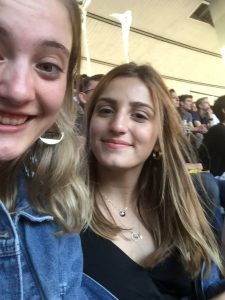Reminiscent of middle school dances, Emily and I were pumped to see MIKA in concert. When he started singing Grace Kelly, it was hard not to be emotional, especially when Dr. Rommelfanger started dancing with us. We all have experienced music-provoked emotion, but why is that? Why do we feel instantly rewarded when a song we like comes on? Why did Emily start smiling and dancing when MIKA played Emeli Danse? Per usual, neuroscientists have the answer.
In 2005, two researchers investigated the reward components of music listening. They used fMRI to track the brain activity of people listening to 23 seconds of music or 23 seconds of scrambled music clips (Menon and Levitin, 2005). They found that during the music clips, participants’ brains were highly active in areas involved in reward processing, notably the nucleus accumbens (NAc), the ventral tegmental area (VTA) and the hypothalamus (Menon and Levitin, 2005). Specifically, they found that interactions between the NAc and the hypothalamus were VTA-mediated, suggesting a strong connectivity between these areas while participants listened to music. No such connectivity was found when participants listened to the scrambled music clips…bad news for bad singers. Something else I found interesting was that they found affective connectivity between the NAc and the OFC and IFC, pathways involved in autonomic, somatic and emotional functions (Craig, 2002). Perhaps this explains why we just can’t resist dancing (or crying) when certain songs come on. Continue reading “Reward of MIKA <3”







